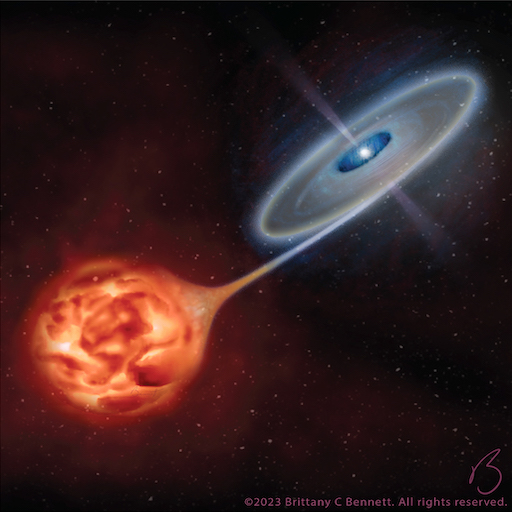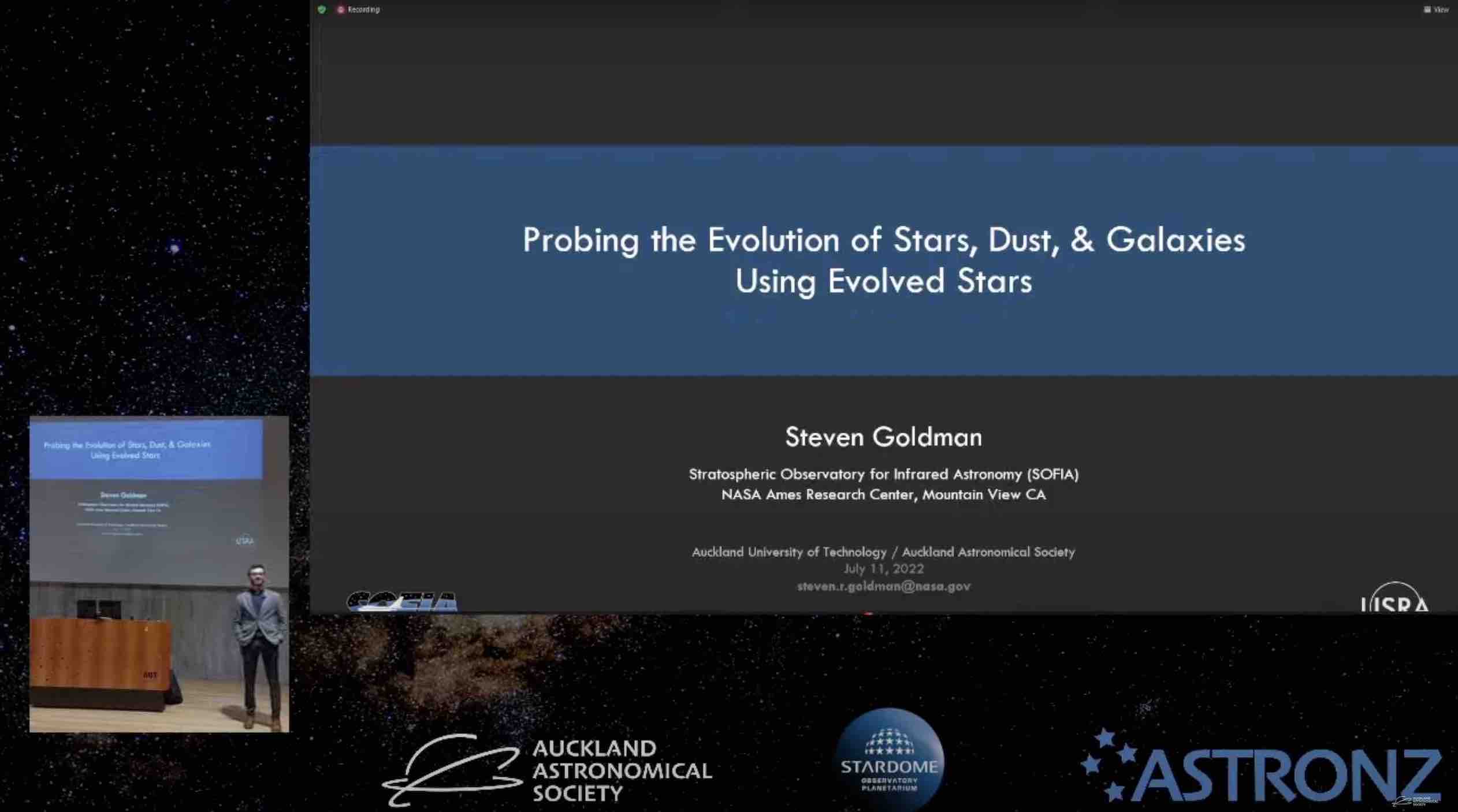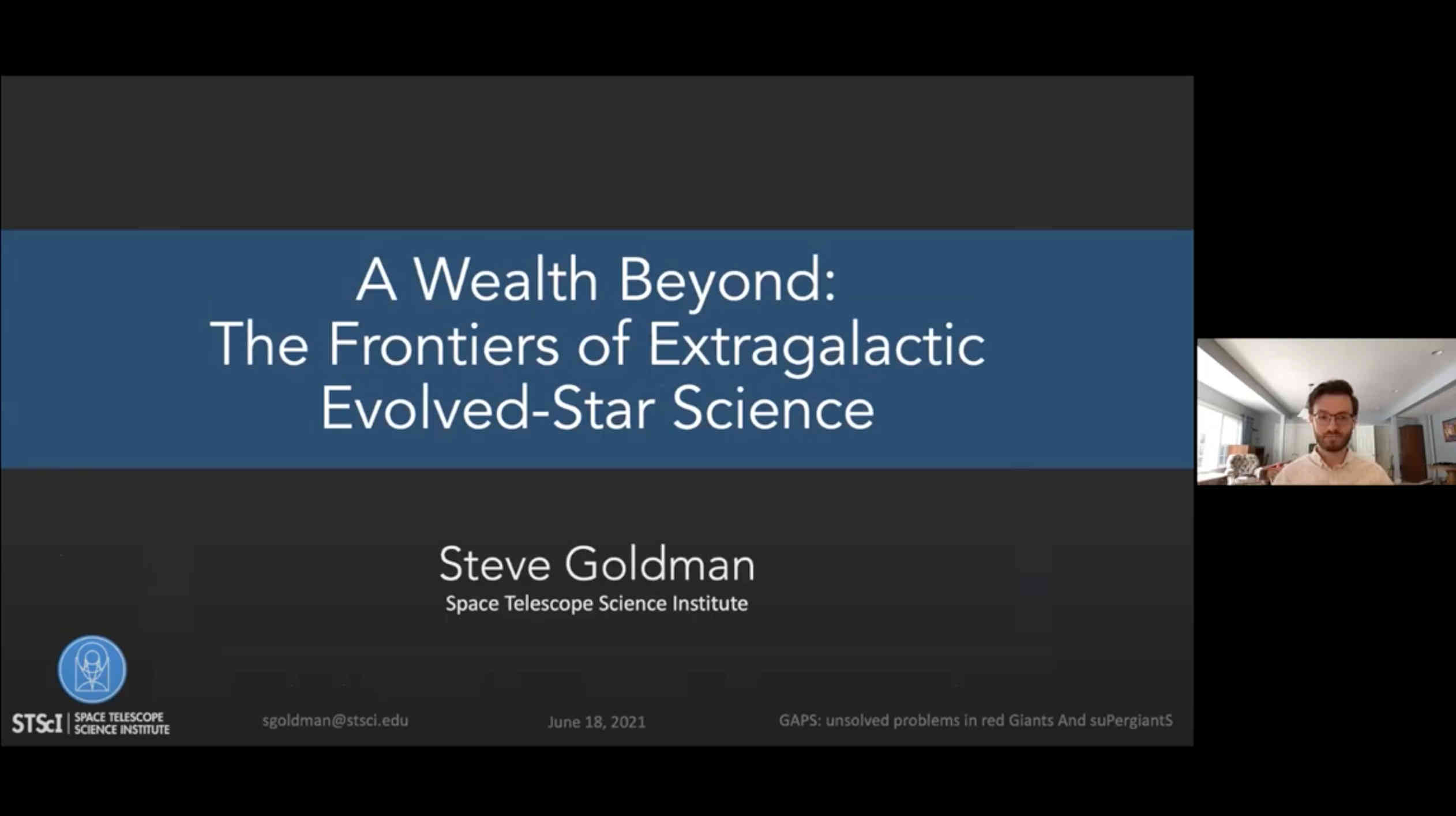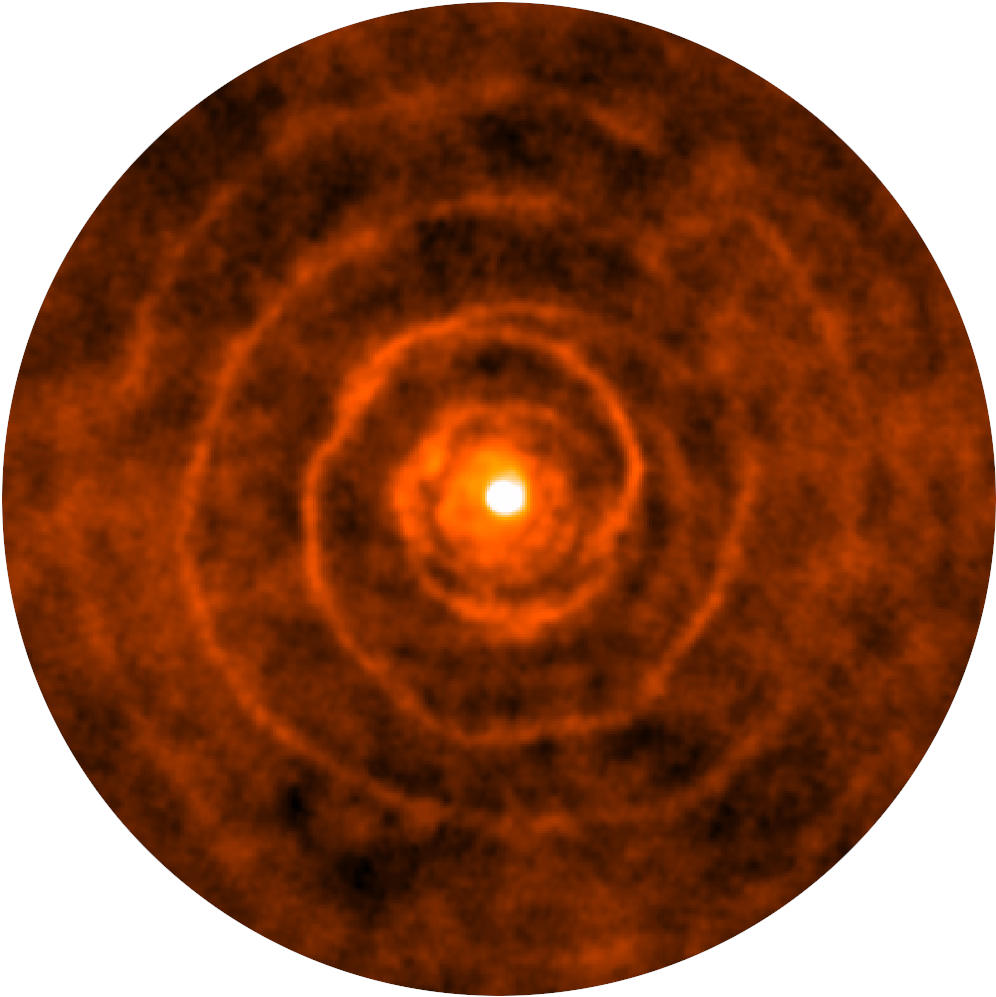
HM Sagittae
An in-depth study of one of the nearest symbiotic systems that recently underwent a nova-like outburst. We use four instruments on SOFIA and Hubble and find a rapid return to pre-novae behaviour.
Link to Press Release!I am an Astrophysicist and Software Engineer at the Space Telescope Science Institute (STScI). Originally from Syracuse, NY, I earned my B.S. in Physics from St. Lawrence University and my Ph.D. in Astrophysics from Keele University in England. After four-years as a postdoctoral fellow at STScI within the Interstellar Medium group, I worked as an Instrument and Observatory Scientist for the Stratospheric Observatory for Infrared Astronomy (SOFIA).
My research centers on the late evolutionary stages of Asymptotic Giant Branch (AGB) stars—sun-like stars nearing the ends of their lives. These stars shed vast amounts of gas and dust, returning up to 85% of their mass to the interstellar medium. By observing them across radio, infrared, and optical wavelengths, I investigate how they enrich galaxies with the raw materials that ultimately form new stars, planets, and even life itself.
As a science software engineer, I maintain calibration software for both the Hubble and James Webb Space Telescopes. I also serve as the Hubble Calibration Pipeline Lead, ensuring that the entire Hubble archive remains precisely calibrated and ready for discovery.
CV
An in-depth study of one of the nearest symbiotic systems that recently underwent a nova-like outburst. We use four instruments on SOFIA and Hubble and find a rapid return to pre-novae behaviour.
Link to Press Release!
The most-complete sample of AGB stars in a metal-rich galaxy to date. Includes 346,623 newly identified AGB candidates and an estimate of their impact on the global dust budget of the galaxy.

New Zealand (July, 2022)

Global, Remote (June, 2021)
Conference Link
 The Dusty Evolved Star Kit is a simple tool for fitting the Spectral Energy Distribution of evolved stars with grids of radiative transfer models. The code ( recently published) uses grids created using the DUSTY code. Future versions of the code will include more grids as well as grids from other radiative transfer codes.
The Dusty Evolved Star Kit is a simple tool for fitting the Spectral Energy Distribution of evolved stars with grids of radiative transfer models. The code ( recently published) uses grids created using the DUSTY code. Future versions of the code will include more grids as well as grids from other radiative transfer codes.